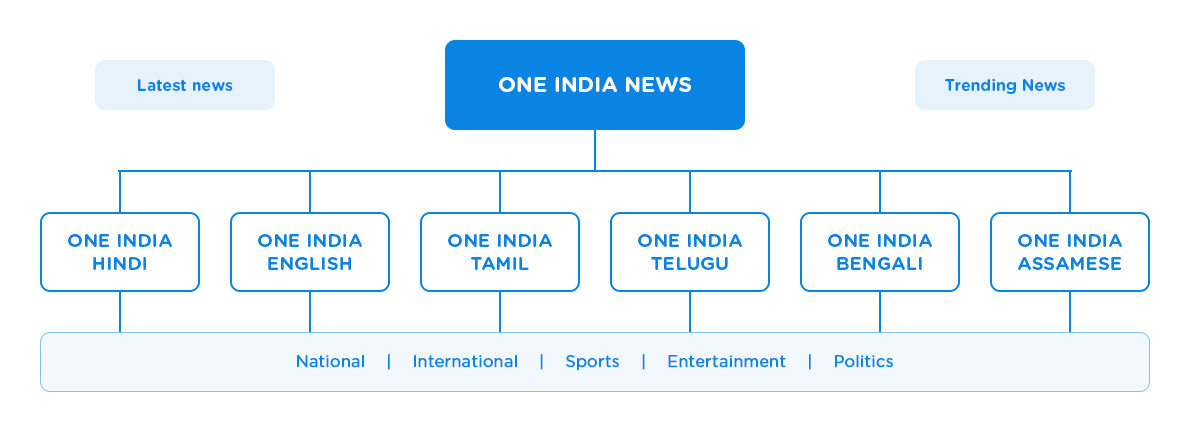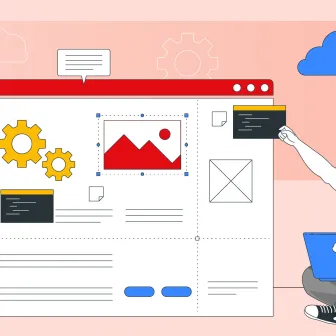Heading a multinational or location agnostic organization with complex content creation and publication needs while also keeping a track of the content can be a difficult task without the right content management system.
The number of bloggers is expected to reach 31.7 million in 2020 in the US alone.
Imagine the number of blogs on the internet. The huge amount of information flowing online has brought us to the situation where the ever-flowing media content needs to be routinely stored and encoded. Networked storage and exchange of data allow content to be distributed making the task of content management all but impossible to deal, without a content management system.
Content and teams that interact in a distributed system need to be dealt intrinsically different from the ones that interact in a centralized system.
Considering the popularity of Drupal as the enterprise’s CMS, in this blog, we will explore how it can help in providing and managing the modern digital experience as a Distributed Content Management System.

Understanding the Concept
A distributed content management system can be difficult to comprehend to different people as it implies a different meaning to a different situation.
To develop a better understanding of the distributed content management system, let’s understand with an example of a national daily which also publishes in different regional languages.
The Distributed Management of Content or The Management of Distributed Content
The Distributed Management of Content deals with the workflow involved in the content creation with a decentralized approach.
The Management of Distributed Content works around dealing with existing content from a variety of sources, involving input (from other websites/sources), output (to other websites) or both.
By implementing Distributed Management of Content, organizations can eliminate the time and opportunity for error introduced when users enter content in multiple places. Unlike the first concept, the goals for Management of Distributed Content are generally around efficiency and control.
Setting up An Example of a National Media House
Let’s call this media house - OneIndia News.
One India news has 6 regional websites. Similar to many media institutions, the website channels are split into multiple categories (let’s say 5) and each of those categories further houses a number of sub-sections.
Some of the regional websites may only have 2 to 4 categories depending on the demand, but others may have upwards of 10.
Each category has an editorial team of its own.
Now the regional websites are handled by a number of different editors for each category and channel. Toss in the requisite assortment of content types and workflow hierarchy - you can see how quickly the web presence gets complex!
Management of distributed content revolves around efficiency and control.
At this scale, we’re likely dealing with multiple websites of one media organization, all of which have requirements around content. This has now become the perfect use-case for Distributed Content Management!

Use Case 1: Publishing Workflows For Individual Websites
For the main website of One India News, a central editorial team with defined roles and distributed content production would suffice.
Consideration of a content approval workflow is a critical part of the content strategy for any organization that employs distributed management.
Each news needs to be added and edited by different people. Editing the news on the live site can result in accidental publishing.
Be it living a number of articles at the same time, sending the final copy for the approval of different persons (without living them) or publishing articles on different subdomains. A robust virtual workflow and content staging and publishing without the requiring the editor to log into the target site is needed from the CMS.
Publishing workflows will be tailored not only to the regional media house but to each channel and team that’s in charge of their regional website. The idea here is to manage the responsibilities across the organization while empowering the editors.
Content to be published on the homepage of the website will likely require significantly more oversight than in the humor or offbeat channel.
Use Case 2: Sharing Content Out - Centralized Content On A Distributed Web Platform
Copy-and-paste becomes a less efficient option when the content is further distributed to the workflow.
A distributed system must have a Pub-Sub (Publisher-Subscriber) feature to ensure the information is processed quickly across the different systems. The centralized system must allow editing and processing of the data while pushing the request to the subsystems. This needs to be done asynchronously so the results populate really fast, for the editor.
Use Case 3: Sharing Content In - Decentralized Websites As Points Of Origin
Another interesting use case presents itself when we consider distributed websites as the starting point for content creation. One India, as any media houses maintain a central calendar of events, such as festivals and political events.
In a well-formed distributed content model, with an appropriate CMS like Drupal, the same metadata that allows visitors to filter events - audience, department, program - can be easily used to syndicate those events to various other websites.
Unfortunately, the same level of consideration is not always given to everyone outside the subset team with appropriate permissions.
Content managers who are generally empowered to manage their own content may not have the same access to do so, or, in cases where they do have permission, find themselves needing to enter content into an entirely different website system to get it published to their site. But why should this be the case?
By extending the same technologies that allow websites to receive events from a central calendar, in Drupal we can enable content managers to publish events to the calendar from within the same website they usually manage. (The same content approval and publishing workflow considerations apply, of course.)
Difference between Centralized and Distributed Content Management
|
Centralized Content Management |
Distributed Content Management |
|
|
|
|
|
|
|
|
|
|
Use Case 4: Multichannel Brand Content
Single-source content syndication also provides an opportunity for media companies to promote their brand across multiple mediums. Many companies choose to employ standalone, all-in-one news providers such as Reuters, rather than integrating a category for each of the news providers.
This makes a tremendous amount of sense - these organization systems when merged with the own CMS can provide a number of compelling results such as quicker results and faster news publishing.
By programmatically receiving the content from a content repository the organization can eliminate the risk of delayed news and perpetual loss of audience.
Use Case 5: Content Delivery To Validated Audiences
In an attempt to decentralize content over the years, media organizations now allow users to add stories to the website.
How they access, validate, identify the users is another key consideration for the company’s distributed content management strategy.
A common approach is to segregate guest editor content into different regional “portals” - websites that require the editor to create accounts and login to see the information for their country or part of the world.
To overcome the challenge of validating these accounts, companies often integrate with an Identity Provider (IdP) such as SAML 2.0 Single Sign On easy configuration & active support, in your Drupal website.
At the far end of the Distributed Content Management spectrum are systems that need to publish consistent, controlled content to websites with no possibility for discrepancies across multiple sites.
Drupal allows Distributed Content Management strategy to be applied to large volumes of content to facilitate efficient workflow. Specifically, the system allows different content and editors to be part of the same system without much replication.
Finally, the modular design of the Drupal architecture allows both stand-alone and distributed realizations so that the system can be deployed in a variety of applications. Connect with us, drop a mail at [email protected] or tweet us @OpenSenseLabs.
Subscribe
Related Blogs
Free Learning Content Management System: Best 10 List For 2025

In today's fast-changing education and training landscape, a free Learning Content Management System (LCMS) is a smart…
Headless CMS vs Traditional CMS: What's The Difference?

If you are looking for a new content management system, you may have come across the term ‘headless CMS.’ Today, businesses…
Best Headless CMS: 10 Best CMS For 2025

A headless CMS is a content service platform that you can access through APIs. It allows content to be delivered across…




